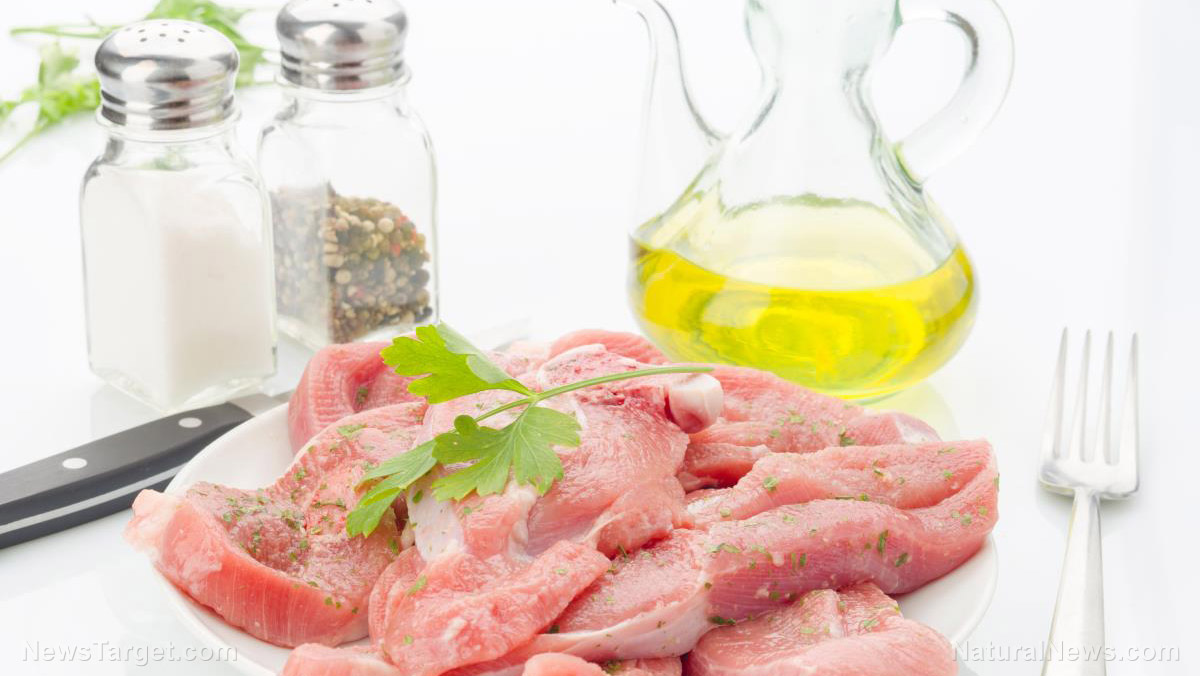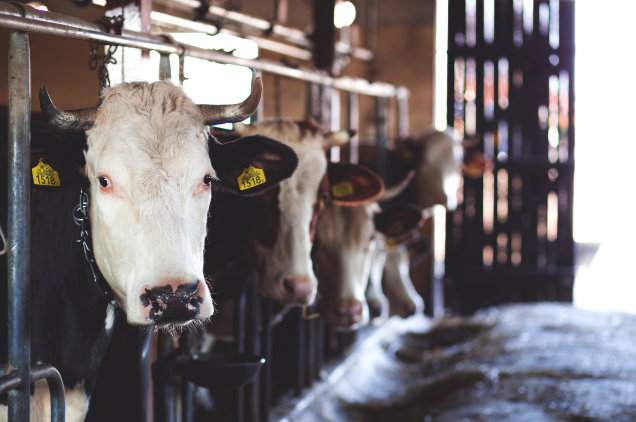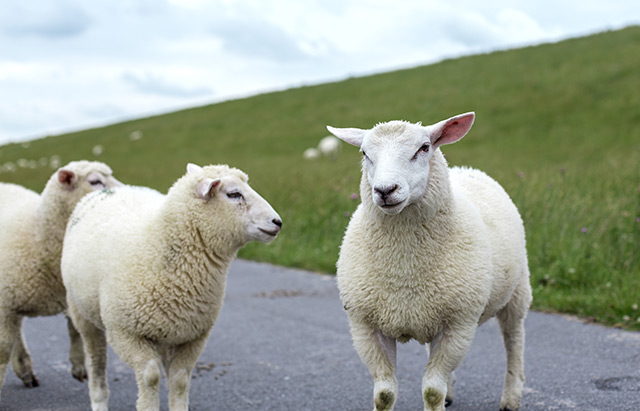
Whether you're butchering wild animals from a hunt or livestock from your homestead, you need to establish if meat from the animal is edible or not. (h/t to PreppersWill.com)
Observe the animal's behavior
Before slaughtering an animal, learn how to interpret its behavior.
While the animal is at rest:
- It should be breathing easily.
- It shouldn't have unusual swellings or discharges from any orifice.
- It must have clear eyes and supple skin with a nice, shiny coat.
When the animal is moving:
- It should move freely without stiffness or a limp.
- It must move in a normal, coordinated manner.
Before slaughtering a domestic animal, take its temperature with a rectal thermometer. A morning temperature is more accurate.
Below are the normal body temperatures (F) of various animals:
- Cattle – 101.5 F
- Chickens – 107.5 F
- Goats – 104 F
- Pigs – 102 F
- Rabbits – 102.5 F
- Sheep – 103 F
- Turkeys – 106 F
How to tell if an animal has anthrax or rabies
Anthrax and rabies are dangerous. These diseases are contagious and often fatal to those handling an animal, its byproducts, excretions, or secretions.
Watch out for the symptoms of these conditions before and after slaughtering animals.
Anthrax
Ruminants (cattle, deer, sheep, etc.) infected with anthrax will have the following symptoms:
- Difficulty breathing
- Staggering
- Trembling
- Bloody saliva, urine, or stool
If you suspect that an animal has anthrax, bury the carcass in hot commercial lye. Burn the litter and wastes, then soak the slaughter area in a five-percent solution of lye.
Make the solution by combining 2.5 pounds of lye in 5.5 gallons of hot water.
The person applying the lye solution must wear protective gear like goggles, rubber gloves, heavy clothing, and boots. Keep vinegar, a weak acid, on hand. Apply vinegar to the person handling the animal if they accidentally touch the lye.
Rabies
Rabid animals will exhibit the following symptoms:
- A characteristic mincing gait
- Aggressive behavior
- Convulsions
- Irritability
- Nervousness
- Spasms
In the early stages of rabies, animals may act more friendly and affectionate than normal.
In later stages, rabid animals will slobber profusely since they can’t swallow their saliva. The animals will rapidly become dehydrated and develop hydrophobia (fear of water).
Rabies may spread to the handler of the animal or its surroundings via its contaminated saliva. The virus can enter your body through small breaks in the skin or the mucous membranes of your eyes, nose, and mouth.
In survival conditions, an animal suspected of having rabies must be put down. Do not slaughter animals that seem ill or are acting abnormally.
If the animal is simply feverish or has a mild condition, isolate and treat it until it recovers. Make sure the animal is healthy for about two weeks or longer before slaughtering.
Kill animals that you're about to butcher in a quick, humane manner. Keep the slaughtering area and equipment clean to avoid contamination. Butcher animals in well-lit areas.
Postmortem inspection of meat
Once the animal is slaughtered, examine the meat before preparing it for consumption.
Remove the gastrointestinal tract (guts) of the carcass and don't let any of its contents touch the meat. Do the same thing with the edible parts of the guts.
Carefully remove the animal's intestines (for sausage casings), liver, pancreas, tripe, and other parts to avoid contamination. Clean these parts thoroughly until the rinse water is clear.
Store the edible parts in clean containers. Use several small containers for each part to prevent cross-contamination.
Lymph nodes and glandular tissues will help you determine if the whole carcass or just the affected parts must be disposed of to prevent contamination of the edible parts. (Related: Food safety review: Experts review the risks of different foods.)
Abscesses
Abscesses or pockets of pus will vary in size. Some will be too small to see while some abscesses can be as large as a basketball.
If you find a single or a couple of isolated abscesses, dispose of the organ or area. If the rest of the meat looks normal, it's still edible. However, if you see multiple abscesses in various organs, dispose of the whole carcass.
Change in meat color
Discard the whole carcass if it has a yellowish color (icteric), particularly the white tissues.
Beef or pork that's brown or discolored and has a strong odor after the animal is slaughtered is also unsafe to eat. Do not consume beef or pork that feels tough or slimy.
When examining the liver, cut the hard, fibrous ducts and check for parasites. If you find parasites, dispose of the whole liver.
Cut into the lung tissue and check for pus in the bronchi or bronchioles (air tubes) within the lung. Lungs with pus are a sign of infection.
Signs of systemic infection include changes in the appearance of several tissues or organs.
- Multiple swollen lymph nodes
- Small abscesses in various tissues or organs
- Tissues that are redder than normal
- Tissues may be congested with blood that looks almost purple
If you observe any of these signs, the whole carcass must be discarded.
Kidneys are good indicator organs. This means kidneys will help you determine if an animal's meat is safe for consumption.
Cook meat for at least 15 minutes until well done. The meat's internal temperature must be 185 F.
Check meat for any abnormalities before preparing it and cook food thoroughly to prevent contamination when SHTF.
Sources include:
Please contact us for more information.























